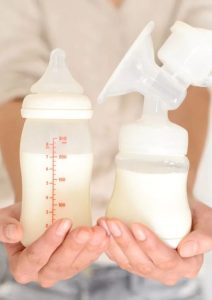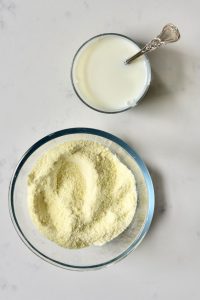Breast milk is a precious gift for babies, providing them with the ideal nutrients they need to thrive. However, safely storing breast milk is crucial to preserve its goodness. How to turn breast milk into powder at home? This article discusses safe storage methods for breast milk, but does not include information on turning breast milk into powder at home.
Safe Storage Tips for Breast Milk
Here are some additional tips for safely storing breast milk:
- Use clean containers: Always use clean, food-grade containers for storing breast milk.
- Label containers: Label each container with the date the milk was expressed.
- Freeze quickly: For long-term storage, freeze breast milk as soon as possible after expressing.
- Thaw breast milk safely: Thaw frozen breast milk in the refrigerator or under running lukewarm water. Never thaw breast milk in the microwave.
Benefits of Breastfeeding
Breastfeeding offers numerous advantages for both mothers and babies:
Benefits for babies:
Breast milk provides complete nutrition for babies, including essential vitamins, minerals, and antibodies to fight illness.
Benefits for mothers:
Breastfeeding can help mothers lose pregnancy weight and reduce the risk of certain cancers.
If you are unable to breastfeed, commercially available infant formula is a safe and healthy alternative.
Importance of Consulting a Healthcare Professional
If you have any questions or concerns about storing breast milk or infant feeding, consult with a healthcare professional, such as a lactation consultant, pediatrician, or registered dietitian.
They can provide specific guidance and recommendations tailored to your baby’s needs.
Breast milk is a valuable source of nutrients for babies. By following safe storage methods, you can ensure your baby receives the goodness of breast milk whenever they need it.
Remember: If you have any questions or concerns about storing breast milk or infant feeding, consult with a healthcare professional.

Safety Precautions
Before we delve into the process of turning breast milk into powder, it’s essential to emphasize safety precautions. Handling breast milk requires strict hygiene to prevent contamination and ensure the safety of your baby. Here are some crucial safety tips to keep in mind:
- Sterilize Equipment: Thoroughly clean and sterilize all equipment, including containers, utensils, and the blender or food processor you will use for drying.
- Maintain Hygiene: Wash your hands thoroughly with soap and water before handling breast milk. Use clean, sanitized storage containers for both fresh and powdered milk.
- Avoid Cross-Contamination: Keep breast milk away from raw foods, pets, and potential sources of bacteria. Use separate storage areas for processing and storing breast milk powder.
Materials Needed for Making Breast Milk Powder
Before you begin the process, gather the necessary materials and equipment. Here’s what you’ll need:
Equipment
- Blender or food processor
- Clean, dry glass or stainless steel trays for drying
- Airtight storage containers
- Measuring spoons
Materials
- Freshly breast milk
- BPA-free breast milk storage bags or containers
- Food-grade silicone spatula for scraping
- Labels for dating and identifying batches

Step-by-Step Guide to Turning Breast Milk into Powder
Now, let’s walk through the process of turning breast milk into powder. Follow these steps carefully to ensure safety and optimal results:
Step 1: Express and Collect Breast Milk
Start by expressing breast milk using a breast pump or by hand. Use clean, sterilized containers to collect the milk. Label each container with the date and time of expression.
Step 2: Prepare for Drying
Pour the expressed breast milk into clean, BPA-free breast milk storage bags or containers. Seal the bags securely to prevent spills during the drying process.
Step 3: Drying Process
- Freeze or Refrigerate: If you’re not ready to start drying immediately, store the milk in the refrigerator or freezer until you’re prepared.
- Transfer to Trays: When you’re ready to proceed, pour a small amount of breast milk onto clean, dry glass or stainless steel trays. Spread the milk evenly with a food-grade silicone spatula to ensure uniform drying.
- Drying Method: Choose a drying method based on your equipment. You can use a food dehydrator set to low heat or an oven with the temperature set no higher than 160°F (70°C). Avoid microwaving or using high heat, as it can destroy valuable nutrients in breast milk.
- Monitor and Rotate: Monitor the drying process closely, rotating trays if necessary to ensure even drying. This step may take several hours depending on the thickness of the milk layer and the drying method used.

Other Steps
Grinding into Powder
Once the breast milk is thoroughly dried and hardened, carefully remove it from the trays. Transfer the dried milk pieces into a blender or food processor.
- Grinding Process: Pulse or blend the dried breast milk pieces until they form a fine powder. Stop periodically to scrape down the sides of the blender or food processor with a silicone spatula to ensure even grinding.
- Texture Check: The powdered breast milk should have a smooth, uniform texture without any large chunks. Continue blending until you achieve the desired consistency.
Storing Breast Milk Powder
Transfer the powdered breast milk into clean, airtight storage containers. Label each container with the date of preparation and store it in a cool, dry place away from direct sunlight.

Tips for Success
- Batch Size: Start with small batches of breast milk to ensure quality and freshness.
- Labeling: Clearly label each container with the date of preparation to track freshness and usage.
- Testing: Consider testing a small amount of powdered breast milk before using larger quantities to ensure it reconstitutes well and remains safe for your baby.
Final Thoughts
Turning breast milk into powder at home can provide flexibility and convenience while ensuring your baby receives the benefits of breast milk. By following these steps and safety precautions, you can create a reliable supply of powdered breast milk to supplement breastfeeding or serve as a backup when fresh milk is unavailable. Experiment with different drying methods and storage options to find what works best for your needs and enjoy the peace of mind that comes with knowing you’re providing the best nutrition for your baby. Whether you’re looking to extend shelf life, enhance portability, or explore creative uses, powdered breast milk offers a versatile solution that supports your baby’s health and well-being.

